“Can I be an anarchist?” Lily asked me recently, perhaps missing a critical point of anarchy by asking permission in the first place.
“Why?” I asked her, which seemed like a reasonable follow-up question for a parent to their child.
Lily launched into a litany of her grievances: Global warming, attacks on the LGBTQIA+ community, lack of reasonable gun control laws that result in her and her classmates having to participate in unsettling lockdown drills, Elon Musk and those ridiculous Cyber Trucks. Lily looks around and only sees injustice.
I asked her what sort of anarchy she wanted to get into, and she replied that wanted to stand in an elected official’s office and ask them random questions all day with the hopes that they’ll eventually tire of her and agree to do things her way.
Then Lily shared a story about gym class. How some kids were making fun of a student she was playing basketball with.
“And those kids weren’t even playing! They were just sitting on the bleachers!” she exclaimed, her ire always rising.
“What did you do?” I asked.
“I told them that if they weren’t going to play, that they shouldn’t comment on other people’s playing.”
Given the Machiavellian state of the standard middle school gymnasium, I was impressed that Lily stood up for her classmate- especially given bullying that she faced in PE last year, when some especially adolescent adolescents barked at her and were generally unkind during the futsol unit.
“Then I asked them what their favorite Taylor Swift song was and who their favorite ‘Star Wars’ characters were.”
At this, I burst out laughing. The kids at Lily’s school haven’t taken too kindly to Swifties and more than likely didn’t care to much for “Star Wars” either.
What’s more, Lily knows this.
“Were you trolling them?” I asked, impressed by her deviousness. Impressed by her willingness to be out in front of the world with her own passions in the face of disdain and judgement.
“Yes,” she said. “It got them to stop making fun of my friend.”
“I’m pretty sure you’re already an anarchist,” I told her. Because that sort of social defiance in the middle school gym- a room that is only rivaled by the cafeteria for watering hole-type shows of power- is anarchy, right? Which Lily has also participated in. She also told me a story about how some kids kept trying to sit at her lunch table in order to tease her and her friends, so naturally, she began singing “The Circle of Life.” Loudly. Which, as a turns out, was an effective deterrent. They weren’t much interested in sitting next to the kid singing Disney songs in the middle school cafeteria.
Anarchy is defined as a state of disorder due to non-recognition of ruling authority. An anarchist denies the validity of the ruling power. In this case, the ruling power is the unspoken social norms established in middle school: You don’t challenge the cool kids, and you definitely don’t draw attention to your niche areas of interest if they are not widely accepted as being “cool.”
On St. Patrick’s Day, Lily came downstairs wearing a sleeve of friendship bracelets, a Taylor Swift t-shirt and cat ears. “It’s the two-year anniversary of the start of the Eras Tour,” she announced. “And it’s also St. Gertrude’s Day – she’s the patron saint of cats.”
Then she said something about smashing the patriarchy by not celebrating in St. Patrick’s Day.
She’s her own person. Each and every day.
It occurred to me that this- this honoring of your own personhood – this was a form of resistance. Authenticity is anarchy. Authenticity is resistance.
Here’s why:
We live in a world that very much wants us to define ourselves by false dichotomies. That wants to tether us to limited identities based on the work we do, our hobbies, our religion, our political ideology, what stores we shop at, what trendy water bottle we drink out of. To the series of descriptors we write on our social media profiles. All these things have a way of limiting us. We put ourselves into boxes- literally check a box about what defines the whole of our personhood- without really questioning who created the boxes and for what purpose.
It seems we are all confined to a series roles that have been assigned to use based on our gender, our skin color, our geography, our professions, et. al. But how much of any of those things really tell the story of who a person really is? How much of it is just external forces needing humanity to perform a part in order to keep the system functioning in a specific way?
I think about this when I look in the mirror. All the expectations that dictate what a woman should look like. How she should present herself to the world.
Necessity to adhere to an “acceptable” body size fuels entire weight loss industries from diet programs to pharmaceuticals to fitness centers. All in the name of “wellness” but really in the name of molding individuals to fit a particular standard.
How I wear my hair, all the grooming I do (or don’t do more often) to maintain eyebrows that are the appropriate shape and size, plucking persistent whiskers sprouting on my chin, waxing the peach fuzz over my lips, shaving the hair under my arms, on my legs, and around my dainty bits*. The moisturizing, concealing, and powdering of my skin, the oiling and elongating of my eyelashes. The sucking in and hoisting up of ungainly parts of my person. The selecting of clothing that’s not too youthful or not too matronly. Not too revealing lest I seem too available but not too modest lest I seem too uptight. All of which requires the right products and fashions. All in the name of walking outside into a world that I fear will ostracize me if I don’t participate in all these rituals.
There are so many expectations. But for who? And for what? Not for me, right?
Author John Green just released his excellent new book, “Everything is Tuberculosis,” all about the world’s deadliest infection. In it, he describes how western society’s perception of feminine beauty- a thin body, pale skin, large eyes, rosy cheeks- were all the result of infection with TB (also called consumption). Women with consumption were believed to be, “more beautiful, ethereal, and wondrously pure.”
“Small waifish bodies can now seem so associated with beauty (and health!) that it can feel innate or instinctual to find smaller bodies more attractive than larger ones,” he writes.
Is the person staring back at me in the mirror the person that I want to look like? Or just my approximation of how I think society wants me to look? Am I just putting on costumes for the roles I play? Here’s how a mother looks. How a wife looks. How a teacher looks. How a middle-aged lady looks. How a white woman looks. If stopped playing roles, how would I even choose to be? Maybe I wouldn’t be striving for beauty standards literally born out of disease.
I ask this question while also recognizing what a privilege it is to blend in. To be able to choose the persona and to be able to mold myself to fit in. To know that I can disappear into the roles the system wants me to play. And I can perform them dutifully.
But that’s not the case for many Americans, right? Whether it’s their skin color, their body shape and size, their sexuality, their religion, the language they speak. There is no ability to blend in enough. There is no choice but to be themselves. And because we live in culture that only says it values individuality but really values assimilation, it costs them.
Green points out that TB, which glamorized pale, translucent white skin is disproportionately affecting people of color around the world. And, of course, because they are people of color, there is no TB chic for them- instead TB is moralized and they face stigmatization while also receiving less access to diagnosis and treatment. Even more so now with reductions of USAID.
By all appearances Lily, with her pale skin, large eyes and waifish figure could disappear into the roles assigned to her. Except that she’s an anarchist. She denies the validity of society’s expectations about what she wears, how she behaves, what she listens to. For those of you who point out that being an 8th grade Taylor Swift fan in 2025 isn’t exactly revolutionary, I would argue that Lily’s level of devotion and obsessive, in-depth knowledge of the entire Taylor Swift catalog, biography, and which body suit she wore for which song at each of the Eras Tour’s stops exceeds a level her peers find “acceptable.”
To be clear, it’s not that Lily is a rule breaker, per say. She routinely admonishes me to follow the speed limit. She fusses at students who run in the hallway. She’s polite and kind and respectful- even to people she doesn’t always think are deserving of her respect.
But she’s also fully herself. She’s unapologetic about her quirks and her passions. She’s a 14-year-old birdwatcher who is obsessed with Warrior Cats and Baby Yoda (“HIS NAME IS GROGU!!” I can hear her correcting me) and has a favorite tree she reads under at recess while the rest of the middle schoolers are on their cell phones surreptitiously or engaging in other adolescent hijinks. That to me is anarchic in a world where everyone else is constantly trying to fit in. This comes at a price though- she sits at the bottom of the middle school hierarchy.
I think all of this is by design. The system of rules put in place so that everyone is always chasing an ideal that very few people can ever reach. And on the climb up the social ladder, we are always stepping on the person just below us. The people at the top have turned the rest of humanity into an Everest made of human bodies. All writhing toward a summit no one can ever reach because the mountain isn’t actually real. It’s distracting from the true culprits of our self-hatred and despair. The tyrants. The oligarchs. The monarchs. The 1%.
And I wonder if we were to all be more like Lily- If we all just stopped climbing. Just paused and listened to our own knowing. Our own little personhood. If we might change the system entirely. Because I don’t believe embodied people feel the need to harm other people. Embodied people are filled with the spirit of lovingkindnness because they are their truest selves, so they don’t have to feel defensive. They don’t need to compensate or prove themselves. To belittle or to control. They can exist and love those around them. Their light comes from within. They don’t have to choose a spotlight. They are a spotlight. And they are equipped to help others locate their own inner beacons.
And it crosses culture. The word “namaste” has to do with light, right? The light in me honors the light in you. When Jesus spoke at the last supper he said, “I leave you peace, my peace I give to you. Not as the world gives it to you. Be not afraid.”
This peace, I think this is the light we carry. Jesus wasn’t trying to say the peace he offered was better than the peace anyone else had to offer. He was showing by example how to find the peace within ourselves by loving ourselves. By loving others. By allowing them to have peace within themselves.
How do we find peace within ourselves? Through authenticity. By heeding that voice in us. That inner knowing. The things that make us feel warm. Whatever that looks like. Whether it’s trees or cats or Taylor Swift. And for allowing others to do the same.
A society made up of those people? That’s revolutionary.
Lily and Jovie’s school just finished a three-show run of “Matilda Jr.” this past weekend. The show was wonderful, and not just in a “for middle school theater” sort of way. The dancing, singing, acting, costumes- all of it was entertaining.
“Ms. Ready says that she and the other grownups always cry when we sing ‘When I Grow Up,’” Jovie told me. I felt immediate kinship with Ms. Ready, Jovie’s history teacher and the musical’s choreographer. The wistfulness of that song snags me at a deep place in my heart.
In particular the lines, “When I grow up, I will be strong enough to carry all the heavy things you have to haul around with you when you’re a grown up.” And “ When I grow up I will be brave enough to fight the creatures that you have to fight beneath the bed.”
I’m grownup and I never feel strong enough to carry all the heavy things. I never feel brave enough to fight the creatures that I have to fight.
These lyrics are like the invisible thread between little Susie’s imagination, fears, and hopes for the future and adult Susan’s yearning to get back to the wide-eyed, enthusiastic earnestness of little Susie. It’s a song reminds us that we contain multitudes. That reminds us that our younger selves saw great potential in us, had big dreams for us, and heaped enormous responsibility on us to be strong and protective.
That’s what I wrestle with now. Not wanting to let little Susie down. Not wanting to let my daughters down who are growing up in a world that feels increasingly hostile toward women.
I don’t have answers for any of it. Only hunches. Only this idea that as wonky as Lily is, she might be on to something.
*Thank you to the girls’ drama teacher for this delightful little euphemism.

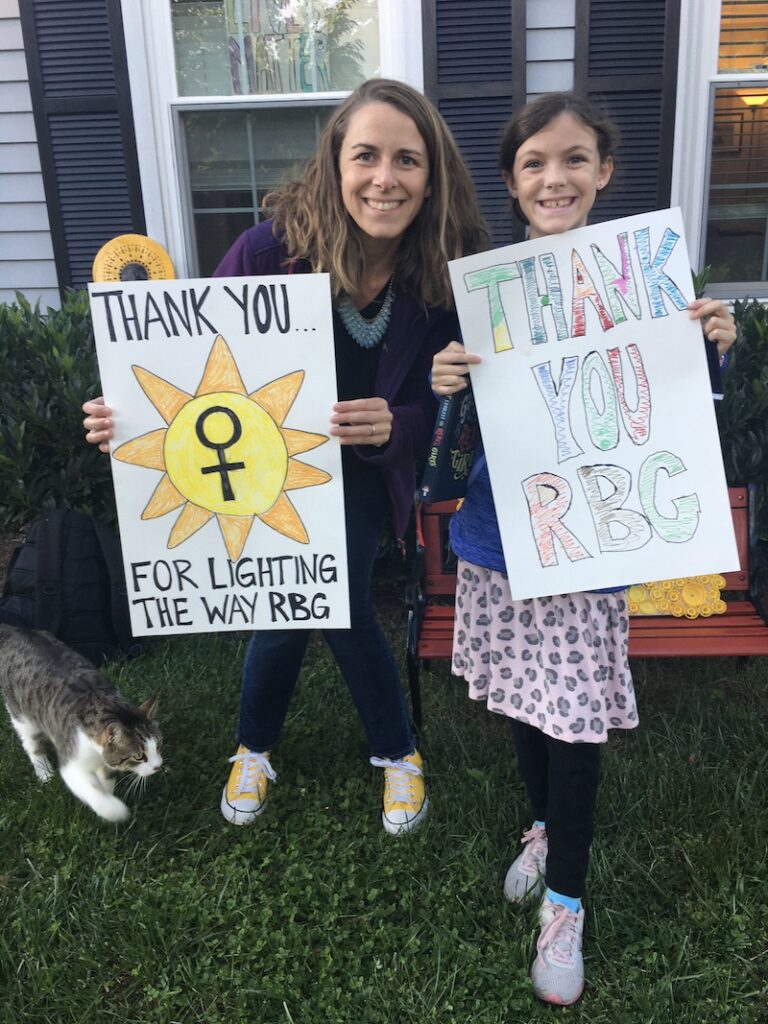

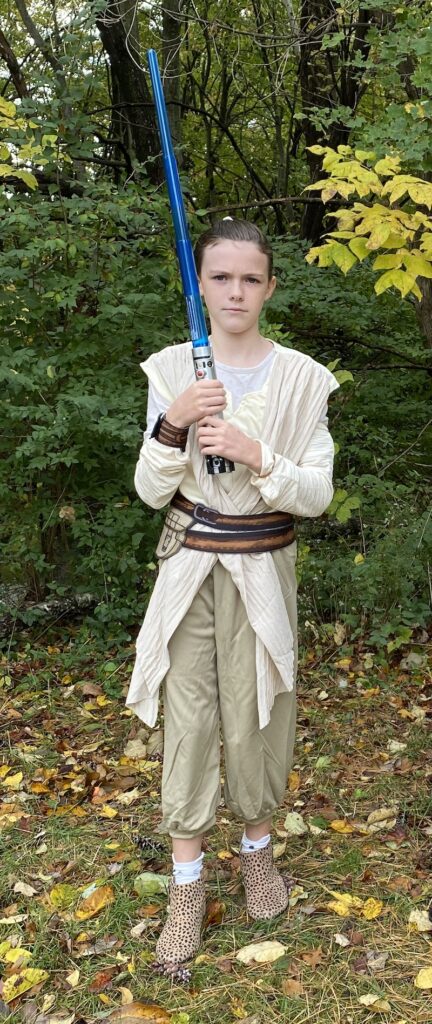
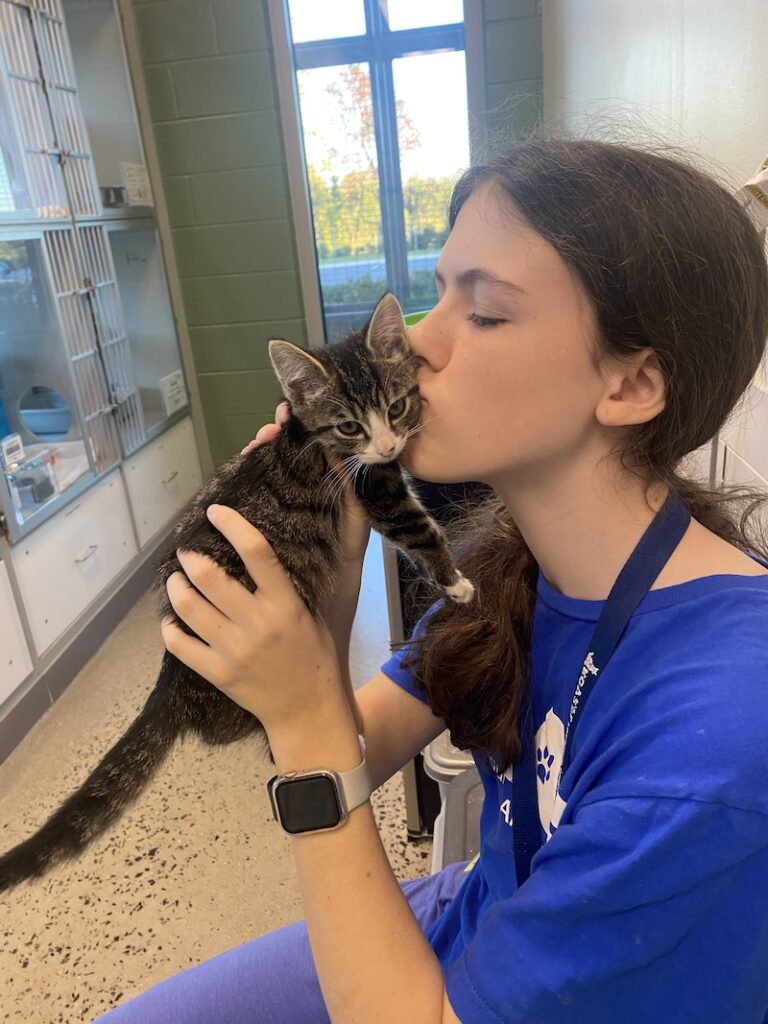
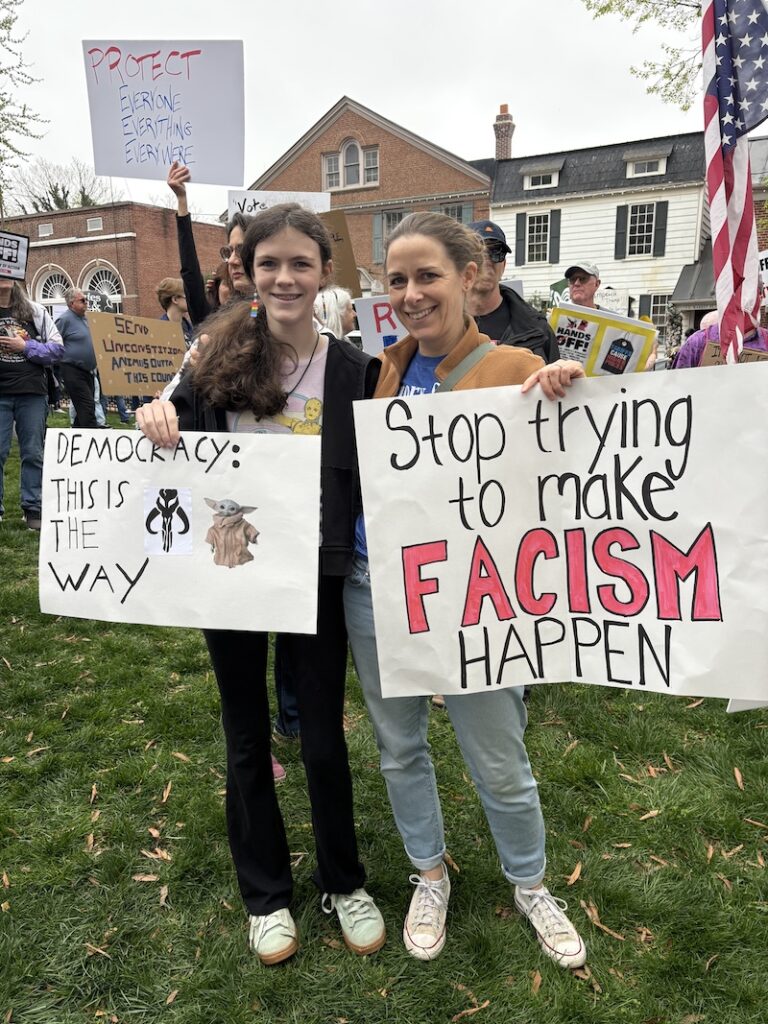
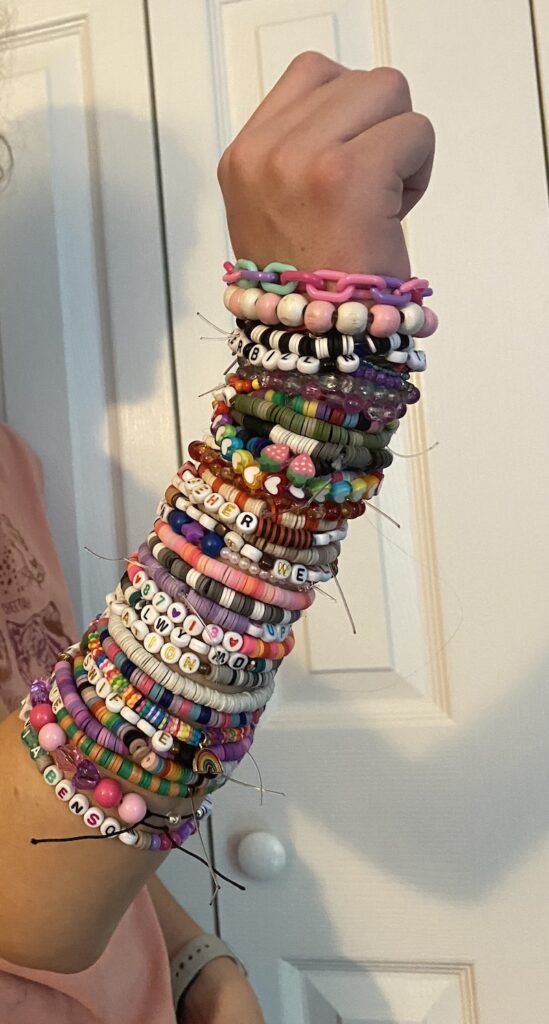
Well put. This is why I don’t preach or talk about addiction. I don’t choose to be defined as an addict or recovering addict. Its just a facet of me not the whole. A fellow birdwatcher I approve.
Beautiful! I love your writing and think you’re an amazing mom, writer, teacher and human! Please keep up the great and important work.